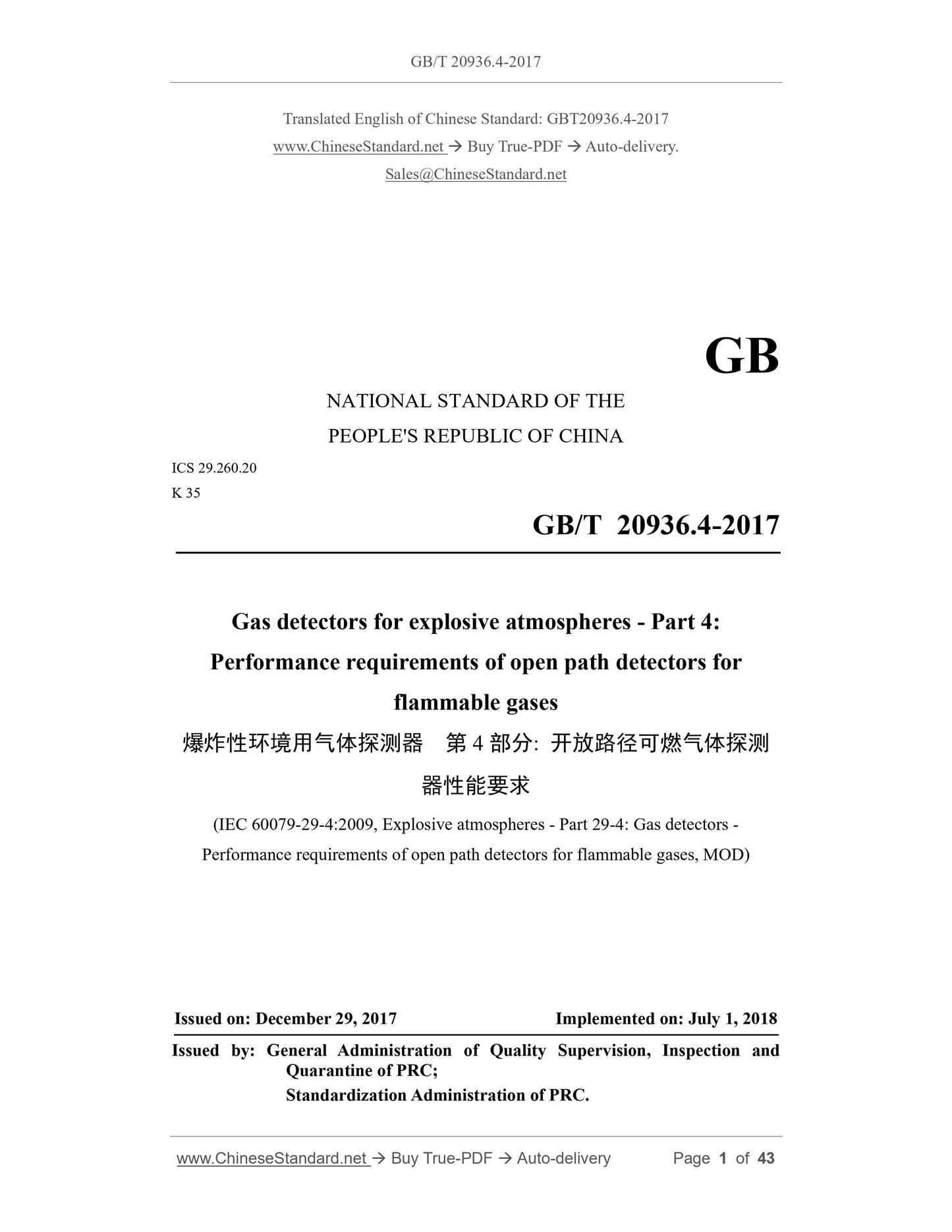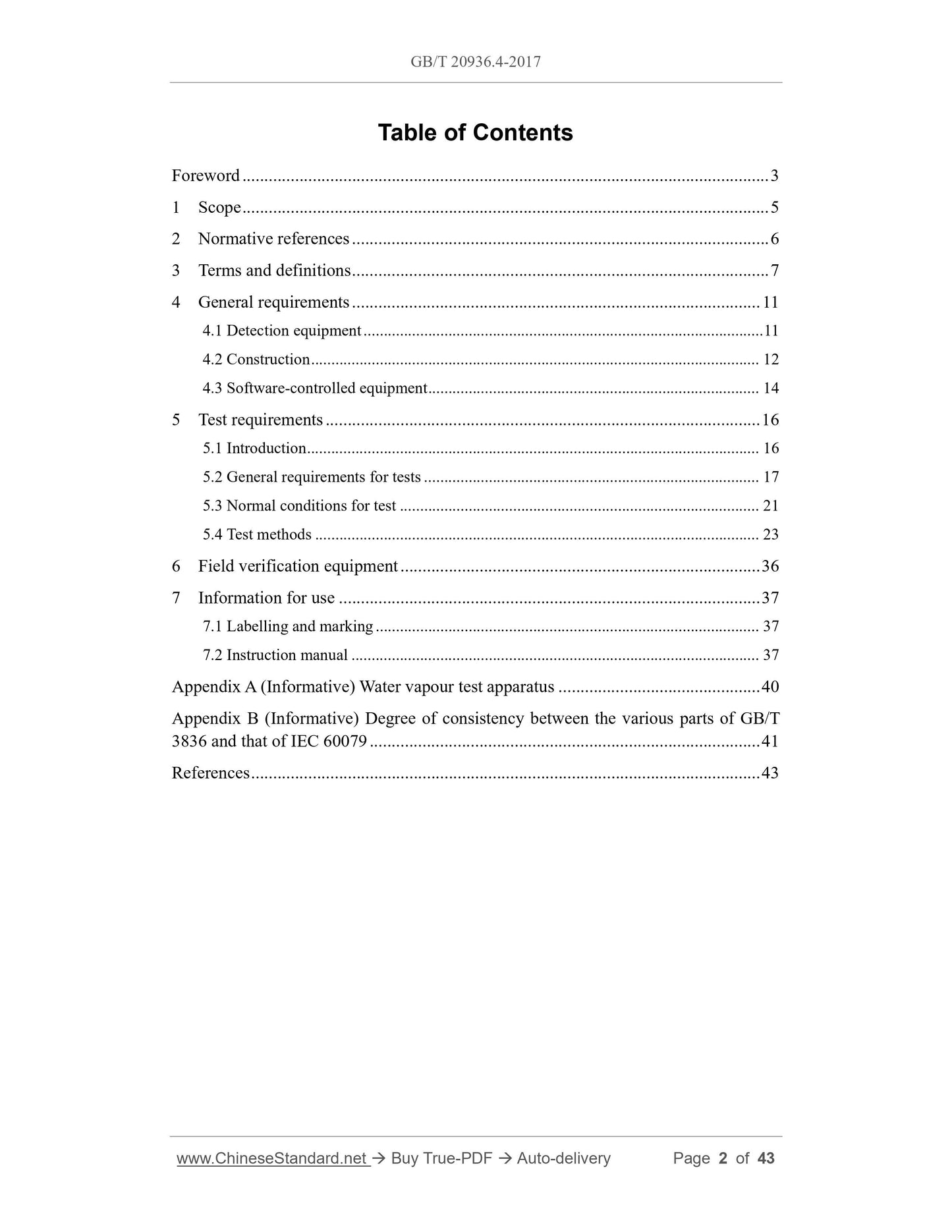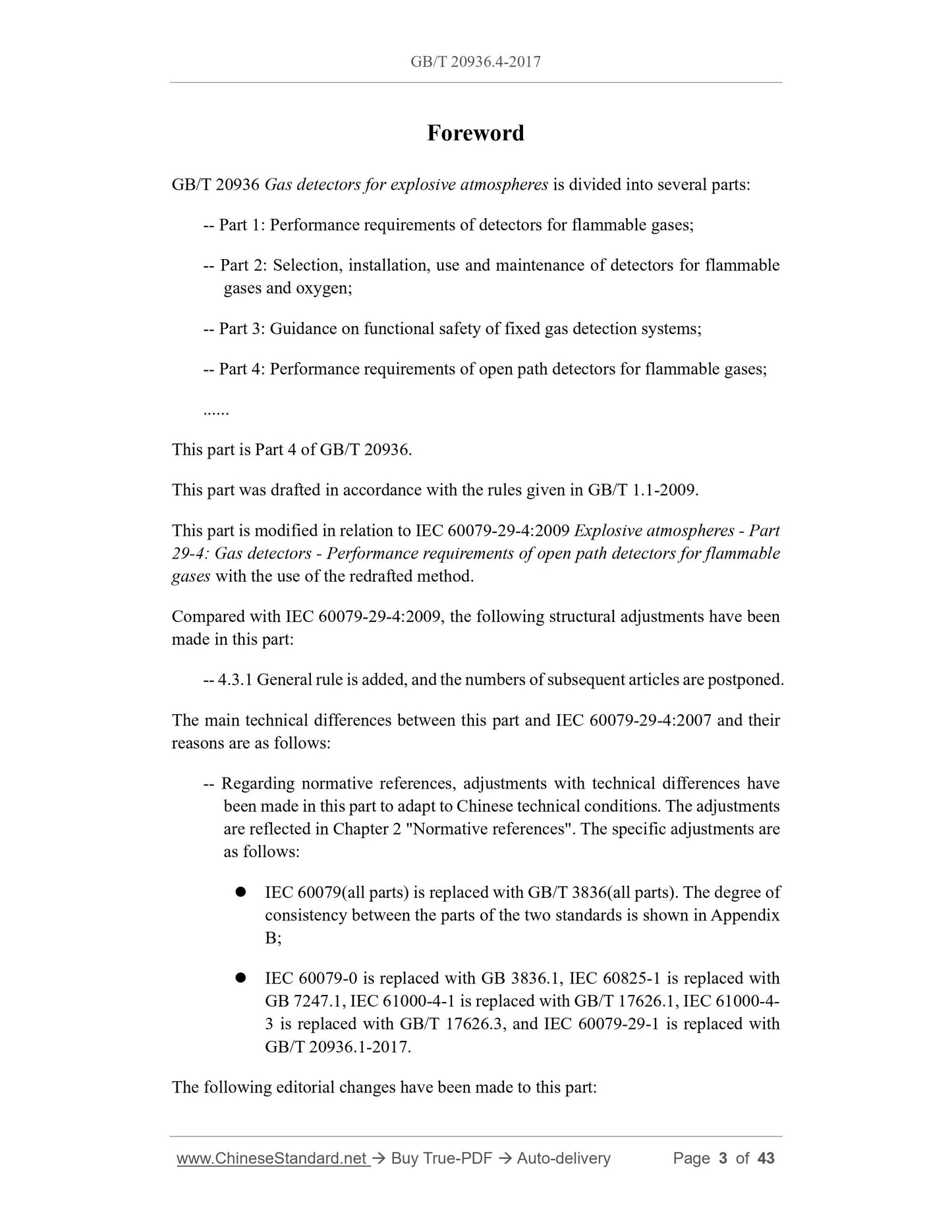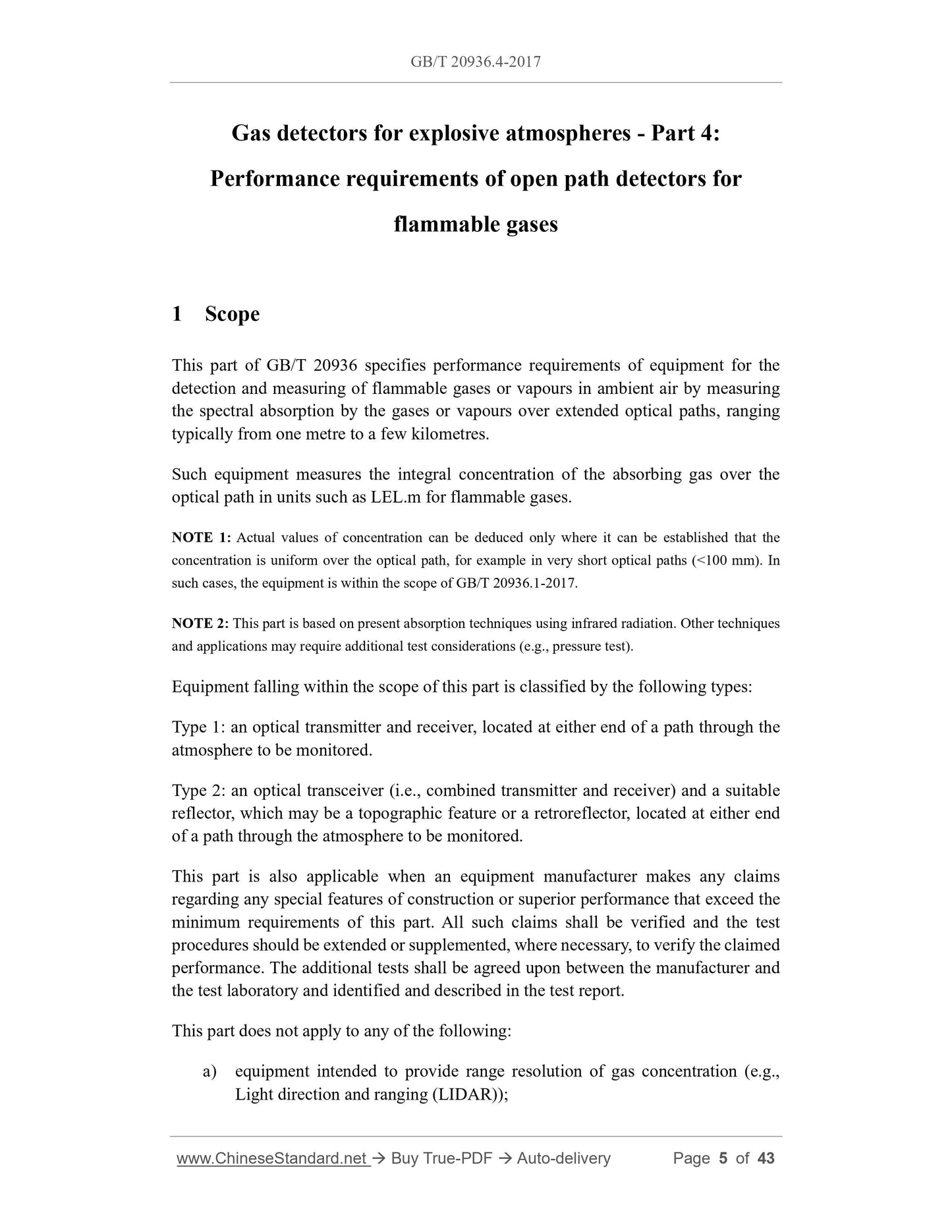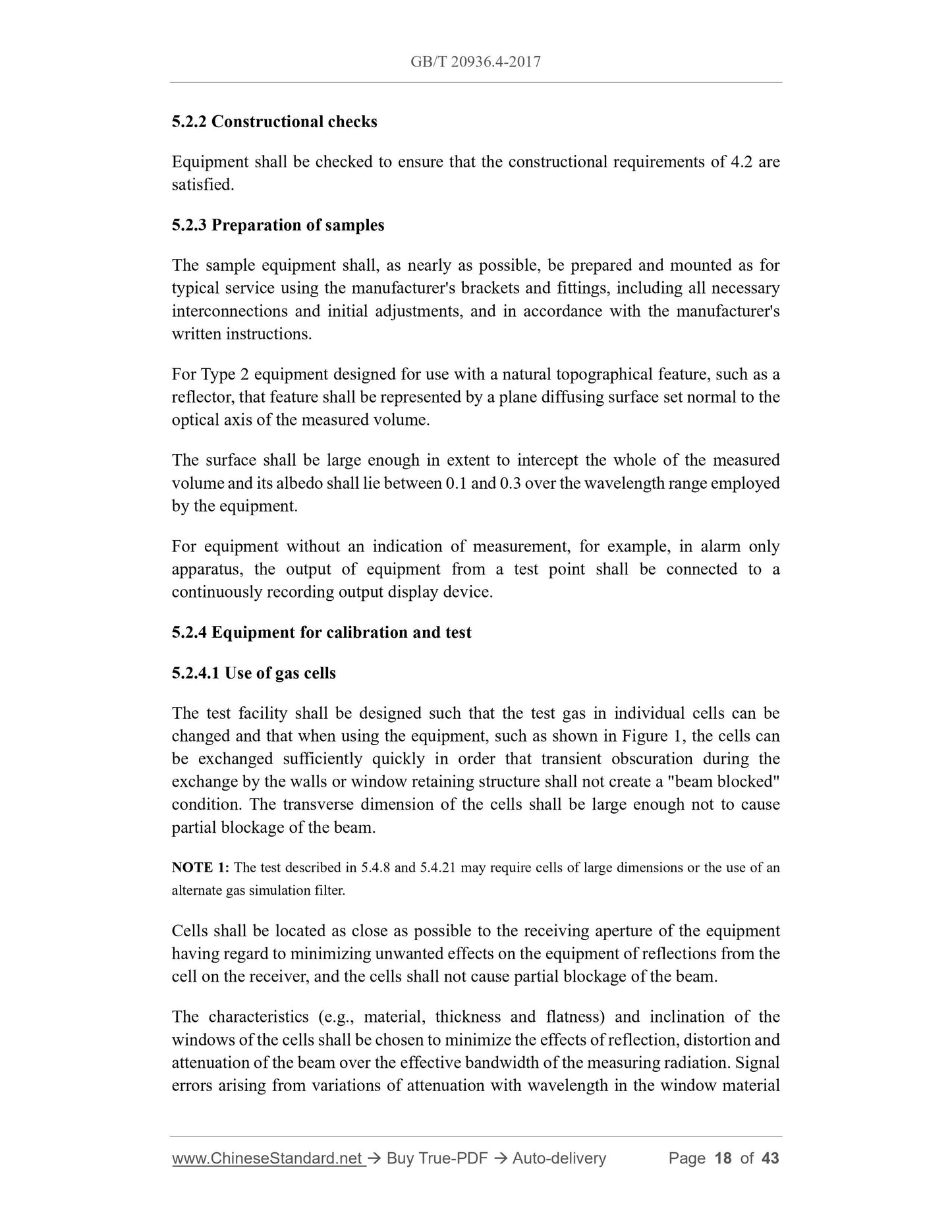1
/
of
5
www.ChineseStandard.us -- Field Test Asia Pte. Ltd.
GB/T 20936.4-2017 English PDF (GB/T20936.4-2017)
GB/T 20936.4-2017 English PDF (GB/T20936.4-2017)
Regular price
$435.00
Regular price
Sale price
$435.00
Unit price
/
per
Shipping calculated at checkout.
Couldn't load pickup availability
GB/T 20936.4-2017: Gas detectors for explosive atmospheres -- Part 4: Performance requirements of open path detectors for flammable gases
Delivery: 9 seconds. Download (and Email) true-PDF + Invoice.Get Quotation: Click GB/T 20936.4-2017 (Self-service in 1-minute)
Newer / historical versions: GB/T 20936.4-2017
Preview True-PDF
Scope
This part of GB/T 20936 specifies performance requirements of equipment for thedetection and measuring of flammable gases or vapours in ambient air by measuring
the spectral absorption by the gases or vapours over extended optical paths, ranging
typically from one metre to a few kilometres.
Such equipment measures the integral concentration of the absorbing gas over the
optical path in units such as LEL.m for flammable gases.
NOTE 1: Actual values of concentration can be deduced only where it can be established that the
concentration is uniform over the optical path, for example in very short optical paths (< 100 mm). In
such cases, the equipment is within the scope of GB/T 20936.1-2017.
NOTE 2: This part is based on present absorption techniques using infrared radiation. Other techniques
and applications may require additional test considerations (e.g., pressure test).
Equipment falling within the scope of this part is classified by the following types:
Type 1: an optical transmitter and receiver, located at either end of a path through the
atmosphere to be monitored.
Type 2: an optical transceiver (i.e., combined transmitter and receiver) and a suitable
reflector, which may be a topographic feature or a retroreflector, located at either end
of a path through the atmosphere to be monitored.
This part is also applicable when an equipment manufacturer makes any claims
regarding any special features of construction or superior performance that exceed the
minimum requirements of this part. All such claims shall be verified and the test
procedures should be extended or supplemented, where necessary, to verify the claimed
performance. The additional tests shall be agreed upon between the manufacturer and
the test laboratory and identified and described in the test report.
This part does not apply to any of the following:
a) equipment intended to provide range resolution of gas concentration (e.g.,
Light direction and ranging (LIDAR));
5.2.2 Constructional checks
Equipment shall be checked to ensure that the constructional requirements of 4.2 are
satisfied.
5.2.3 Preparation of samples
The sample equipment shall, as nearly as possible, be prepared and mounted as for
typical service using the manufacturer's brackets and fittings, including all necessary
interconnections and initial adjustments, and in accordance with the manufacturer's
written instructions.
For Type 2 equipment designed for use with a natural topographical feature, such as a
reflector, that feature shall be represented by a plane diffusing surface set normal to the
optical axis of the measured volume.
The surface shall be large enough in extent to intercept the whole of the measured
volume and its albedo shall lie between 0.1 and 0.3 over the wavelength range employed
by the equipment.
For equipment without an indication of measurement, for example, in alarm only
apparatus, the output of equipment from a test point shall be connected to a
continuously recording output display device.
5.2.4 Equipment for calibration and test
5.2.4.1 Use of gas cells
The test facility shall be designed such that the test gas in individual cells can be
changed and that when using the equipment, such as shown in Figure 1, the cells can
be exchanged sufficiently quickly in order that transient obscuration during the
exchange by the walls or window retaining structure shall not create a "beam blocked"
condition. The transverse dimension of the cells shall be large enough not to cause
partial blockage of the beam.
NOTE 1: The test described in 5.4.8 and 5.4.21 may require cells of large dimensions or the use of an
alternate gas simulation filter.
Cells shall be located as close as possible to the receiving aperture of the equipment
having regard to minimizing unwanted effects on the equipment of reflections from the
cell on the receiver, and the cells shall not cause partial blockage of the beam.
The characteristics (e.g., material, thickness and flatness) and inclination of the
windows of the cells shall be chosen to minimize the effects of reflection, distortion and
attenuation of the beam over the effective bandwidth of the measuring radiation. Signal
errors arising from variations of attenuation with wavelength in the window material
Basic Data
| Standard ID | GB/T 20936.4-2017 (GB/T20936.4-2017) |
| Description (Translated English) | Gas detectors for explosive atmospheres -- Part 4: Performance requirements of open path detectors for flammable gases |
| Sector / Industry | National Standard (Recommended) |
| Classification of Chinese Standard | K35 |
| Classification of International Standard | 29.260.20 |
| Word Count Estimation | 30,316 |
| Date of Issue | 2017-12-29 |
| Date of Implementation | 2018-07-01 |
| Issuing agency(ies) | General Administration of Quality Supervision, Inspection and Quarantine of the People's Republic of China, Standardization Administration of the People's Republic of China |
Share
